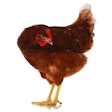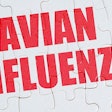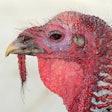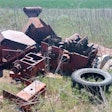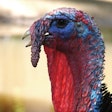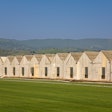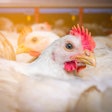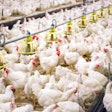Proper response to livestock and poultry disease outbreaks is vital and the Animal Health Program team at Clemson University Livestock Poultry Health (LPH) is helping prepare a specific group of responders in how to help handle these events before catastrophe occurs. During a recent biosecurity exercise by Clemson University, volunteers learned the importance of donning and doffing protective gear and clothing.
Staff members trained 16 new South Carolina Veterinary Reserve Corps (SCVRC) members about how to use biosecurity techniques to prevent spreading animal diseases should these volunteers be asked to assist farms during animal disease events.
“The SCVRC group is a unit of the U.S. Surgeon General’s Medical Reserve Corps that is being developed to provide volunteers who can assist with animal and agricultural issues that may occur as the result of disasters anywhere in our state,” said Dr. Charlotte Krugler, LPH Emergency Preparedness veterinarian.
“This particular biosecurity training is tailored to members who have indicated they would be willing to help us at the State Veterinarian’s office in the event of a livestock or poultry disease event. Besides needing help in disease events, there will be a lot of other emergency situations, including pet-related needs in natural disasters, so we welcome anyone who has an interest to apply to be an SCVRC volunteer.”
During the training, volunteers learned about foreign animal diseases, such as foot and mouth disease and avian influenza. Krugler spoke of the importance of the first disease because of its contagious nature, its ability to affect any split-hoofed animal species and devastation that an outbreak could cause to the U.S. economy. Dr. Julie Helm, poultry veterinarian with the Clemson Animal Health, Veterinary Diagnostic Center and a National Poultry Improvement Plan state inspector, talked about how avian influenza can easily spread to multiple poultry farms.
Infection of poultry with low pathogen avian influenza viruses may cause no disease or mild illness and may only cause mild signs (such as ruffled feathers and a drop in egg production). These subtle signs may not be detected. Infection of poultry with highly pathogenic avian influenza (HPAI) viruses can cause severe disease with high mortality. Both viruses can spread rapidly through flocks of poultry, Helm said. HPAI virus infection in poultry can cause disease that affects multiple internal organs with mortality up to 100 percent, often within 48 hours. Some ducks can be infected and not show any signs of illness.
Participants also learned the importance of correctly putting on (donning) and correctly taking off (doffing) personal protective equipment and/or clothing before entering or after exiting a farm so as to not spread diseases to other farms.
Dr. Ellen Mary Wilson, director of LPH Animal Health Programs, and Kirsten Glenn, LPH poultry inspector, demonstrated and explained the proper sequence for donning personal protective equipment: coveralls that cover clothing from neck to ankles and from the arms to the ends of the wrists; snuggly fitting masks or respirators; goggles or face shields; gloves; and shoe covers.
Doffing personal protective equipment is just as important so that a person does not accidentally transport disease pathogens to other animal facilities, Helm said.
Participants in this training are volunteers who are licensed veterinarians and technicians, animal handling assistants and veterinary practice managers, as well as others interested in helping with matters related to animals and agriculture.
One volunteer is Dr. Bob Simmons, a veterinarian who is retired from Merck Animal Health. Simmons said he has a lot time on his hands and has been searching for some way to fill his days.
“I learned about his class and thought it would be a great opportunity for me to use my veterinarian skills to help if the need ever arises,” Simmons said. “This is a wonderful way to use my knowledge for something that can help a lot of people.”
Simmons hopes to become involved in pet-related issues as well. “I work with the Red Cross, but the Red Cross can just take people when emergencies arise; they can’t take pets,” he said. He hopes to learn about agencies and programs that can help pets during emergencies.
Clemson University Livestock Poultry Health is home to State Veterinarian Dr. Boyd Parr. LPH’s responsibilities include leading the state’s preparedness, response and recovery for livestock and poultry disease events. In an animal disease event, LPH collaborates with United States Department of Agriculture Veterinary Services, as well as with other state agencies and organizations. LPH’s traditional partners in field response have been Clemson Cooperative Extension agents.
“Adding South Carolina Veterinary Reserve Corps volunteers as responders is a nice addition to the team,” said Parr.
Anyone interested in joining the SCVRC should visit www.scav.org/ and search under the Emergency Preparedness link for the SCVRC handbook and application. Additional trainings for volunteers will be held as time and funding permits, Krugler said. In addition, a Biosecurity Training video is being developed to be used as “just-in-time” training between live training sessions.
Funding for the biosecurity training supplies was provided by a grant awarded to the SCVRC from the National Association of County and City Health Officials in 2016. The overall goal of this grant is to improve preparedness for animals in emergencies in South Carolina.






